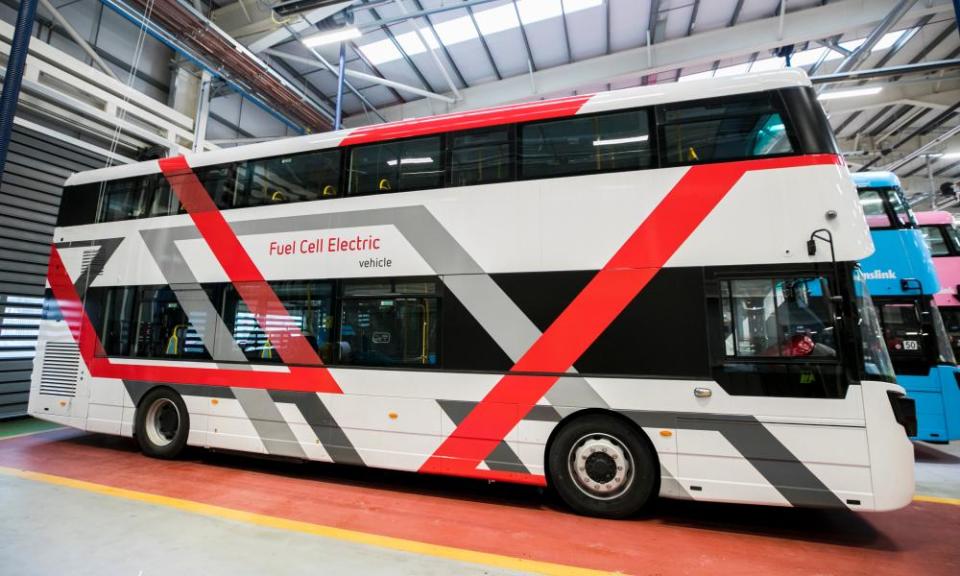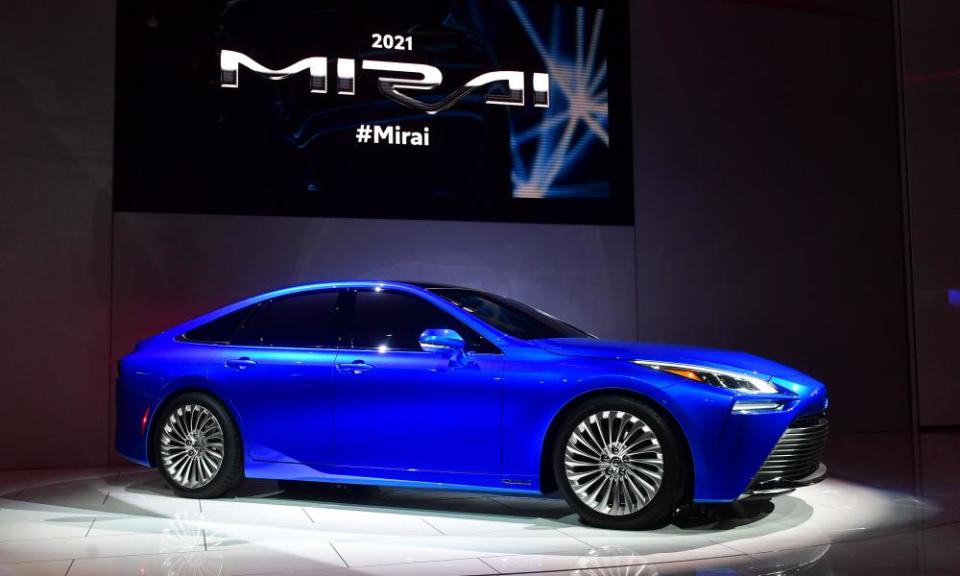Hydrogen fuel bubbles up the agenda as investments rocket

More than 50 years ago hydrogen fuel cells helped put Neil Armstrong on the moon, but mainstream usage of the technology has remained elusive since.
Now there are signs that may be changing, with a spate of new investments even amid the coronavirus pandemic.
In the UK, the transport secretary, Grant Shapps, this week told MPs that the government will experiment with hydrogen fuel cells for an entire town’s bus network. Earlier this month, the Department for Transport gave £400,000 to the Hydroflex project, run by the University of Birmingham and rail-leasing company Porterbrook, to bring the first hydrogen train to UK main lines in the next few weeks.
Fuel cells function by running hydrogen over a catalyst, often platinum, stripping away electrons that run through an electrical circuit. The positively charged hydrogen ions combine with oxygen in the air to form water as its only emission, while the electricity generated can run the same motors as used in any electric vehicle, giving a fuel source with zero harmful exhaust emissions.
Crucially, the hydrogen must be produced from clean sources to be carbon neutral, or “green”. So-called blue hydrogen, created using methane gas rather than electrolysis of water, has attracted significant interest from fossil fuel producers, but it does not come with the same environmental benefits.
Carmakers have recognised the potential of the technology for decades. Detroit’s General Motors first tested its hydrogen-powered Electrovan in 1966, but in the UK only 169 hydrogen cars have ever been registered. Elon Musk, the chief executive of Tesla, regularly describes “fool cells” as “staggeringly dumb” for passenger cars, given the inefficiencies of using electricity to produce hydrogen rather than directly to power vehicles.

Yet many large automotive manufacturers are sticking with it. Toyota, the world’s second-largest carmaker, planned – before the pandemic – to produce 30,000 of its Mirai hydrogen cars in 2020, but larger vehicles are the main aim, said Johan van Zyl, chief executive of Toyota Motor Europe, earlier this year.
“We need scale for hydrogen to be successful,” he said. “To find scale I think heavy commercial vehicles and buses will be the first phase of hydrogen application in Europe.”
Hydrogen has already been used successfully in large vehicles. Transport for London’s RV1 bus ran for eight years shadowing the Thames, clocking up more than 1m miles. Buses run on regular routes and return to depots, removing the biggest obstacle to mass adoption of hydrogen: the lack of a network of filling stations across the UK.
The logic of using hydrogen for buses prompted Jo Bamford, the heir to the JCB digger empire, to buy RV1 manufacturer Wrightbus out of administration in October. The Northern Irish busmaker is working with Bamford’s hydrogen production company, Ryse, on a plan to popularise hydrogen buses, with an early order for 20 from TfL and others in the pipeline.
Bamford, whose father is Lord Bamford, the billionaire Tory donor, lobbied for the government to support a hydrogen bus experiment.
Bamford estimated that Wrightbus would be able to produce buses at the same cost as diesel at a rate of about 600 buses a year. He expected the firm to be profitable in 2020 before the pandemic struck, and acknowledged that he had spent “millions” of pounds keeping the company afloat after it was forced to stop production.
Part of Bamford’s pitch was that the UK could be a world leader in hydrogen, if it invests in infrastructure soon. “We missed the boat on batteries in Britain,” he said. “This is a great British solution.”
For rail and vehicle usage – and potentially aircraft – fuel cells have the major benefit of allowing refuelling within minutes, comparedwith the hours of charging required by some battery-powered cars.
The flurry of activity has piqued investor interest. Sheffield-based ITM Power has what it claims is the world’s largest factory making electrolysers, the machines that break down water into its hydrogen and oxygen constituents. Shares in the Aim-listed company, backed by chemicals giant Linde, have more than tripled in price since the start of the year.
Graham Cooley, ITM’s chief executive, says the revolutionary reduction in renewable energy costs has made hydrogen into a genuine solution across the economy. Solar- and wind-powered electrolysis offers the prospect of carbon-neutral hydrogen production, which could also provide an effective way of storing unpredictable renewable energy.
“The market for green hydrogen is expanding exponentially,” said Cooley. “The whole world is moving to net zero.”

 Yahoo Sports
Yahoo Sports 